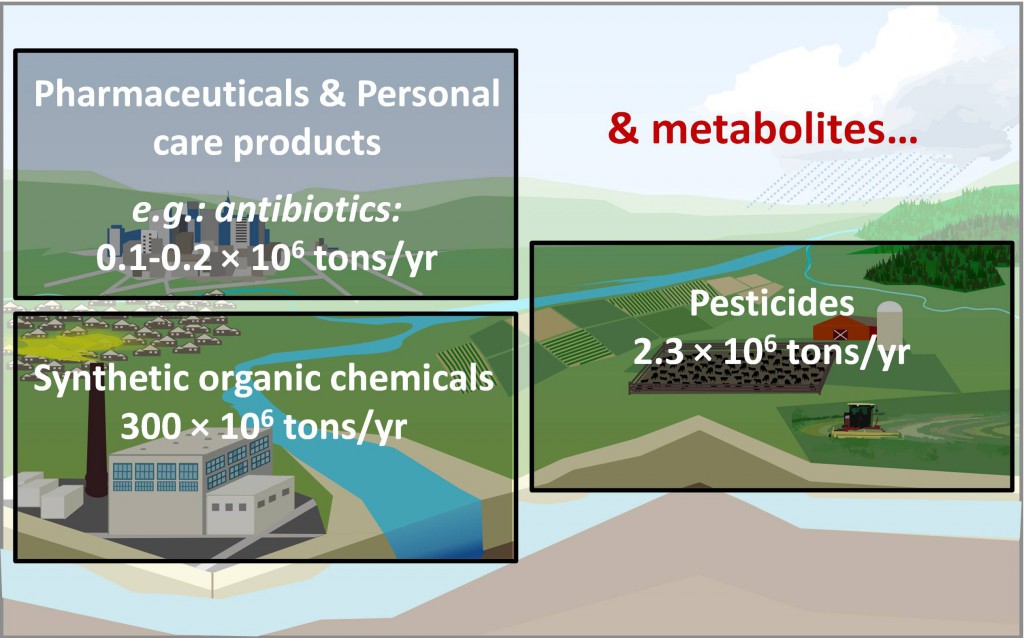Motivation
Human activities result in the use of many materials (e.g., plastics) and chemicals (e.g., pharmaceuticals, compounds in personal care products, and current use pesticides) that end up in our environment. Typical loads of some of the anthropogenic chemicals in urban, industrial, and agricultural areas are presented in the attached figure. Loads of microplastics and nanoplastics are much harder to estimate, but they are found pretty much everywhere.
In addition to this, our world is changing, with climate change affecting both the spatial and temporal distribution of water quantity:
– We are getting stronger and more frequent abnormally heavy precipitation events, leading to research questions on the impact of such future precipitation events on transport/fate of contaminants?
– We are seeing more droughts, leading to the need to find ways to reuse available grey water and stormwater water for everyday use.
Finally, the most vulnerable groups, including children, the elderly, people with preexisting health conditions, outdoor workers, and overburdened communities (e.g., minorities, low-income, tribal, indigenous populations), are at an even higher risk because of the compounding factors from climate change (e.g., NOAA). Risks related to water that are exacerbated for marginalized communities include: more flooding (due to poor stormwater management), and no access to safe drinking water and reliable wastewater treatment systems, resulting in more exposure to waterborne disease & hazardous chemicals. There is therefore many environmental justice problems that require special attention.
To protect human and environmental health, the research of our group is driven by three main objectives:
(1) to track the behavior of specific emerging contaminants in surface waters & groundwater;
(2) to develop and evaluate novel cost-effective water treatment technologies based on ecological engineering principles (also called green infrastructure, nature-based systems, or best management practices);
(3) to develop a new application for stable isotope techniques to quantify trace levels of emerging contaminants in water.
This information is vital for the development of appropriate policies and engineering solutions for use, disposal, and sustainable removal of these contaminants that will improve the quality of life of all populations.

